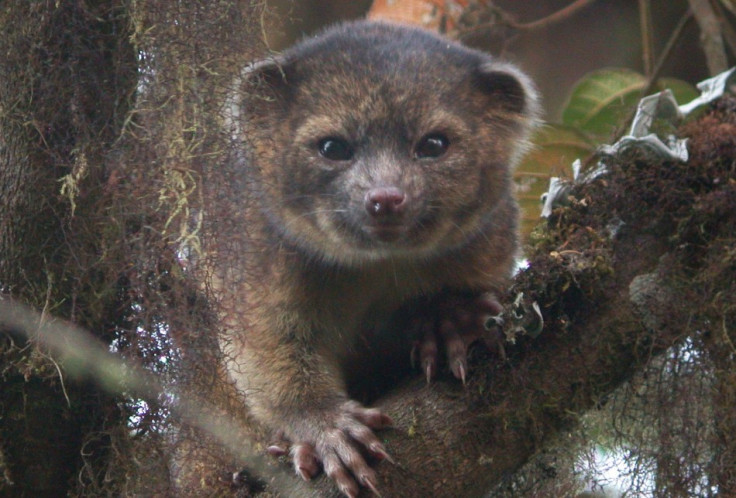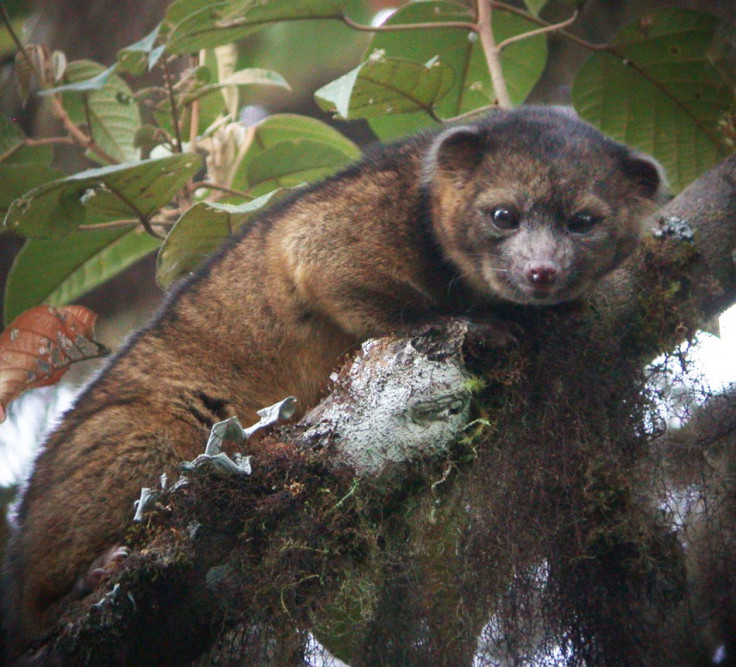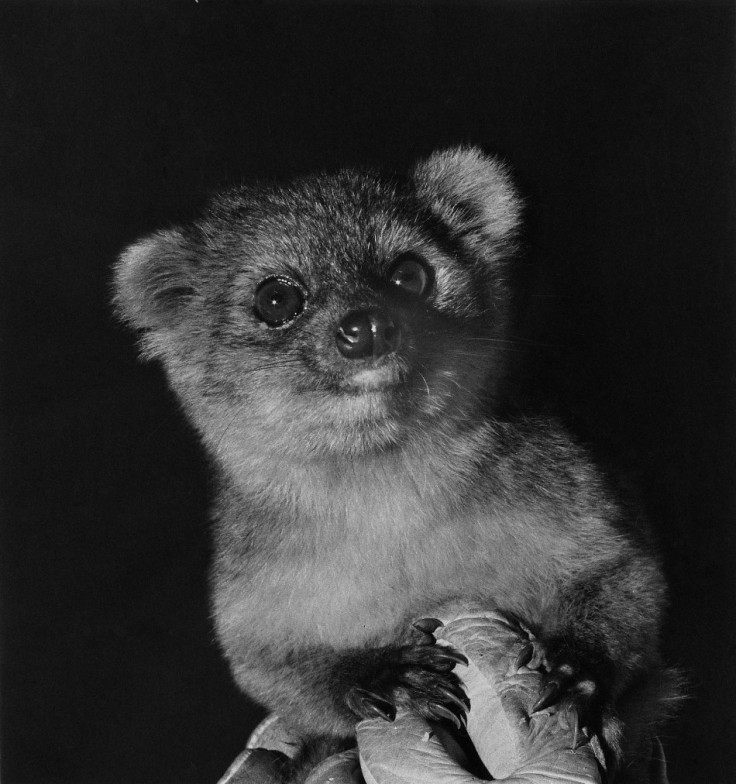Carnivore Discovery Olinguito Looks Like Cross between Cat and Teddy Bear [PHOTOS]
Scientists in South America discover western hemisphere's first new species of carnivore in 35 years

A new species of carnivore has been discovered by scientists - and it looks like a cross between a house cat and a teddy bear.
Scientists at the Smithsonian Institution in Washington DC said the olinguito was the first species of carnivore to be discovered in the western hemisphere for 35 years, explaining that the olinguito had been the victim of mistaken identity for over 100 years.
It is the latest scientifically documented member of the family Procyonidae, which includes raccoons, coatis and kinkajous.
The olinguito weighs 2lbs, has large eyes, woolly orange-brown fur and lives in the cloud forests of Colombia and Ecuador. Scientists said their discovery was "incredibly rare" for the 21<sup>st century.
Research leader Kristofer Helgen, curator of mammals at the Smithsonian's National Museum of Natural History, said: "The discovery of the olinguito shows us that the world is not yet completely explored, its most basic secrets not yet revealed.
"If new carnivores can still be found, what other surprises await us? So many of the world's species are not yet known to science. Documenting them is the first step toward understanding the full richness and diversity of life on Earth."

It took 10 years to discover the olinguito, which began with the team completing a comprehensive study of the olingo family. While trying to establish how many olingo species should be recognised, they ended up finding the completely new one.
Olinguito's teeth and skull were smaller and differently shaped to other species, providing the team with the first clue that they were looking at a new species.
After examining museum skins, they also found the olinguito was smaller overall with a longer and denser coat, and that it lived in a unique area of the northern Andes Mounties, between 5,000 and 9,000ft above sea level.
Helgen and Roland Kays, director of the Biodiversity and Earth Observation Lab at the North Carolina Museum of Natural Sciences, then organised a trip to find the olinguito, to see if it still existed.
Kays said: "The data from the old specimens gave us an idea of where to look, but it still seemed like a shot in the dark. But these Andean forests are so amazing that even if we didn't find the animal we were looking for, I knew our team would discover something cool along the way."

What they found was olinguitos living in a forest on the western slopes of the Andes.
They team found they were most active at night, have one baby at a time and mainly eats fruit - while it is a member of a carnivorous family, the olinguito appears to choose a predominantly vegetarian lifestyle, much like pandas eating bamboo compared to its grizzly relative.
People have lived in or near the olinguito's cloud forest for thousands of years without being discovered by outsiders.
"Proving that a species exists and giving it a name is where everything starts," Helgen said. "This is a beautiful animal, but we know so little about it. How many countries does it live in? What else can we learn about its behaviour? What do we need to do to ensure its conservation?"
The team is now planning another trip to the olinguito's habitat, which is under threat from human development.
"We hope that the olinguito can serve as an ambassador species for the cloud forests of Ecuador and Colombia, to bring the world's attention to these critical habitats," Kays said.
© Copyright IBTimes 2025. All rights reserved.






















